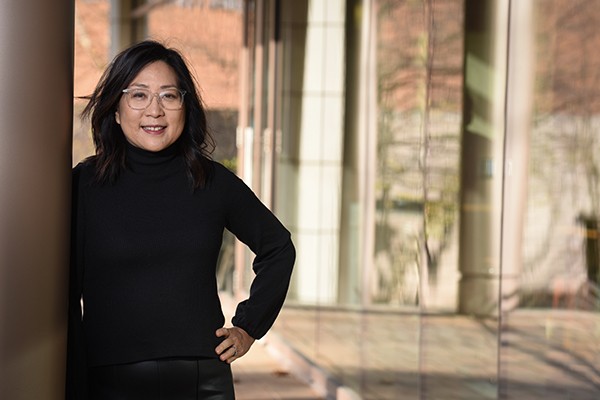Toward Smarter & Healthier Cities
“Creating healthy cities is perhaps the great challenge of this century, and the move to smart cities gives us the opportunity to make health a part of every neighborhood, every block,” observes Stephen K. Klasko, MD, MBA, president of Thomas Jefferson University and CEO of Jefferson Health. “We can now diagnose what's wrong in urban life and find solutions in real time."
The Institute for Smart and Healthy Cities was launched in 2020 to support multidisciplinary research, innovation and education on the transformation of urban environments into more efficient, healthier and livable cities. A collaborative initiative of the College of Architecture & the Built Environment, the College of Population Health and Kanbar College of Design, Engineering and Commerce, the Institute is catalyzing learning, exploration and technology development partnerships across the University—and with businesses, nonprofit organizations and public agencies. It represents Jefferson’s intention to drive convergence of the myriad fields of knowledge necessary for effectively addressing the complex challenges that cities face in coming decades.
Institute director Edgar Stach, Dipl.-ingh, professor of architecture, notes that, “We start from the perspective of cities as complex, inter-related systems; and we are helping faculty and students address the most pressing and connected challenges – housing and workplaces, public health, environment, energy and transportation in urban regions.” Reflecting that transdisciplinary approach, the Institute’s associate directors are Russell K. McIntire, PhD, assistant professor of public health, and Tod Corlett, PhD, William L. Jasper Chair and professor of industrial design.
The Institute pursues research programs that address three scales. Urban scale projects will, for example, analyze population behavior changes through data-driven analysis, modeling and simulation and visualization, and will use statistical modeling to predict changes in health, energy and transportation. Building scale projects will predict the effects of daylighting and natural ventilation on health outcomes in work, life and healing spaces, and can help develop and predict health benefits of new concepts for net zero energy buildings. Finally, device scale projects will develop people-centric building controls and management technology, and will allow us to study the interconnectivity between data on human health and measures of micro climate and air pollution.
In one of the unique interdisciplinary research and design projects done under the Institute’s oversight, a team of architecture, industrial design and occupational therapy students and faculty worked with counterparts at three Israeli institutions—Bezalel Academy of Arts and Design, Shenkar College of Engineering, Design and Art and globally respected Sheba Medical Center—to develop concepts for Sheba’s “City of Health” initiative. The project showcased how forward-looking industrial and architectural design can creatively and productively help shape the emerging healthcare landscape.
The project’s specific objectives included developing a three-phase master plan for the Sheba campus’s physical future. The plan included methods for bolstering public transportation—including new transport hubs and light rail stops—as well as pedestrian-friendly environments and biking paths. It also identified opportunities and potential products for aging-in-place, including devices that enable older patients to better find their way around campus, and public seating specifically designed to help them sit down and then stand up easily.
“Our group sought to address a series of real-life challenges experienced by the Medical Center’s patients, caregivers, visitors, and surrounding community,” Dr. Stach explains. “The result was a series of creative solutions at many levels—from major buildings to individual patients’ concerns.”


